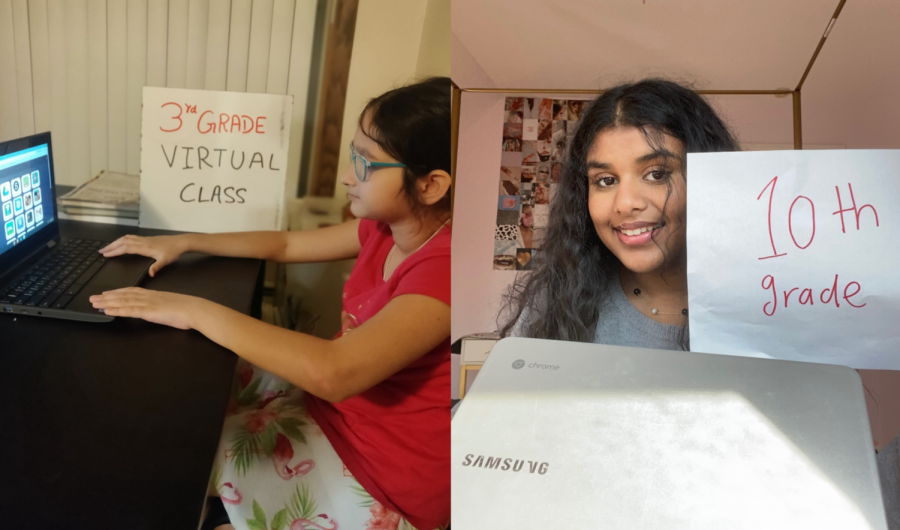A brief recap of distance learning from underclassmen in the district
October 8, 2020
October marks a full month into a school year unlike any other. While the COVID-19 pandemic briefly left the fate of the upcoming year in question, the school district ultimately introduced a plan for both in-person and virtual learning to begin in early September. The Edina Virtual Academy (EVA) includes students enrolled in the full-time virtual option for this school year. Hybrid students, on the other hand, attend school in-person twice a week in groups based on the alphabetical placement of their last name. Regardless of what plan they have chosen, both groups of students are expected to take part in distance learning.
On a typical day of distance learning, students are expected to complete attendance-based assignments (ABAs) which mark them present for a given class and are due at the end of the school day, attend Google Meets, and keep up-to-date with their coursework and homework assignments. With several classes a day, including up to seven at the high school, students find the numerous schedules they are required to be on top of difficult to manage. “There are a lot of links and assignments and ABAs and Google Meets to keep track of,” Maya Lew, an eight-grader enrolled in hybrid learning at South View Middle School, said. “It can get really confusing.” Some tools teachers have provided that she has found to be helpful are calendars and unit guides that lay out daily and weekly assignments for students.
With distance learning utilizing additional video calls and ABAs on top of regular coursework, students may be spending more time doing school than they typically would in person. “I’m usually sitting on my bed doing school for almost 10 to 12 hours a day,” Mehak Jain, a sophomore at Edina High School enrolled in EVA, said. This becomes particularly difficult when the student’s classroom is digital. “When you’re in person, it’s easier to concentrate better, but on the screen, you can’t really focus that much,” Lee said. “A lot of my peers will tend to not be as focused in the online classes.” Similarly, some students find the added workload to be taking a toll on the quality of their learning. “I feel like I’m instead more focused on just getting so many different things done in time, like submitting my ABAs,” Jain said.
However, students agree that the distance learning platform has certainly improved since the district first tried it out in the spring. “The teachers are able to help us more because they know how hard it is,” Lee said. She also referenced how teachers are now able to maintain more organized unit guides for their classes, something that was not as common when they first started out. Ipsita Dhar, a third-grader at Cornelia Elementary, especially enjoys creative platforms like Bitmoji Classroom and Flipgrid to help her class stay engaged. “The links there [Bitmoji Classroom] take us to books online that people read and we can hear them,” she said. At the elementary school, students are logged on to their classroom video calls from 8 a.m.-2 p.m.with a lunch and recess break in the middle.
As for suggestions, both Lee and Jain had ideas that would help distance learning work more smoothly for them. “I definitely would say one thing to do is push back the time we have for the ABAs because they can take longer than teachers think,” Jain said. For Lew, she says it’s important that she’s able to stay in contact with her teachers more readily. “Sometimes when I have to find an assignment and it’s not there, then I have to contact my teacher, and it just takes a while to hear back,” she said.
One thing is for sure, as both students and faculty are navigating these strange times, adapting the distance learning system based on input from both sides will be key in ensuring a successful school year.


